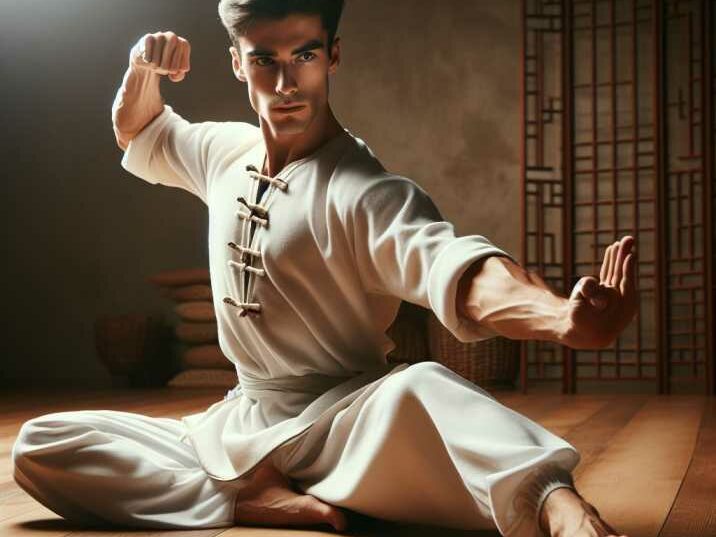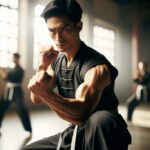Introduction:
Table of Contents
The journey of Kung Fu in the West is a captivating tale, rich with cultural exchange and martial prowess. From its introduction to its widespread popularity today, Kung Fu has woven itself into the fabric of Western culture in a myriad of ways. Let’s delve into the intricacies of its history of Kung Fu in the West, tracing its evolution through five pivotal epochs.
Kung Fu, the ancient Chinese martial art form, has transcended geographical boundaries to become a global phenomenon. Its journey in the West is a testament to its enduring appeal and cultural significance. In this article, we embark on a journey through time, exploring the history of Kung Fu in the West world, from its early beginnings to its current status as a cherished art form.
History of Kung Fu in the West : 5 Epochs
Early Encounters (19th Century)
The history of Kung Fu in the West can be traced back to the 19th century when Chinese immigrants first arrived on American shores during the California Gold Rush. Among these immigrants were skilled martial artists who brought with them the ancient traditions of Kung Fu. Initially met with curiosity and skepticism, Kung Fu slowly began to gain recognition as a formidable martial art form.

Hollywood Glamour (20th Century)
The 20th century marked a significant turning point in the history of Kung Fu in the West, thanks to the influence of Hollywood. Iconic films such as “Enter the Dragon” starring Bruce Lee introduced Kung Fu to a global audience, captivating viewers with its dynamic choreography and philosophical depth. Bruce Lee’s legendary status as a martial arts pioneer helped propel Kung Fu into the mainstream consciousness.
Rise of Schools and Dojos (Late 20th Century)
As Kung Fu gained popularity in the West, a growing number of schools and dojos began to offer training in various Kung Fu styles. This proliferation of training facilities not only catered to enthusiasts seeking to learn the art but also fostered a sense of community among practitioners. Kung Fu became more than just a martial art; it became a way of life for many.
Cultural Exchange and Adaptation (21st Century)
In the 21st century, Kung Fu continued to evolve and adapt to the changing cultural landscape of the West. Influenced by other martial arts forms and contemporary fitness trends, Kung Fu underwent a transformation, blending traditional techniques with modern training methodologies. This cross-pollination of ideas resulted in the emergence of new Kung Fu styles tailored to the needs of Western practitioners.
Global Recognition and Influence (Present Day)
Today, Kung Fu enjoys widespread recognition and influence across the globe, transcending cultural boundaries and uniting people from diverse backgrounds. Its philosophy of discipline, respect, and self-improvement resonates with individuals seeking physical fitness, mental well-being, and spiritual growth. From Hollywood blockbusters to competitive tournaments, Kung Fu continues to leave an indelible mark on the world stage.

Information-Based Table:
| Epoch | Key Events |
|---|---|
| Early Encounters | Chinese immigrants introduce Kung Fu to the West |
| Hollywood Glamour | Bruce Lee’s films popularize Kung Fu worldwide |
| Rise of Schools | Proliferation of Kung Fu schools and dojos |
| Cultural Exchange | Adaptation of Kung Fu to Western culture |
| Global Recognition | Kung Fu’s influence on the world stage |
Conclusion:
The history of Kung Fu in the West is a testament to the enduring power of martial arts as a vehicle for cultural exchange and personal transformation. From its humble beginnings among Chinese immigrants to its current status as a global phenomenon, Kung Fu has traversed a remarkable journey, enriching the lives of countless individuals along the way.
FAQs:
- What is the significance of Kung Fu in the West?
- Kung Fu holds cultural significance in the West as both a martial art form and a philosophy of self-discipline and personal growth.
- How has Kung Fu evolved over time in the West?
- Kung Fu has evolved in the West through a combination of cultural exchange, adaptation to modern training methodologies, and integration with other martial arts forms.
- Are there different styles of Kung Fu practiced in the West?
- Yes, there are various styles of Kung Fu practiced in the West, ranging from traditional Shaolin Kung Fu to contemporary adaptations tailored to Western practitioners.
- What role has Hollywood played in popularizing Kung Fu in the West?
- Hollywood has played a significant role in popularizing Kung Fu in the West through iconic films and the portrayal of martial arts legends such as Bruce Lee.
- Is Kung Fu still relevant in the modern era?
- Yes, Kung Fu remains relevant in the modern era as a holistic approach to physical fitness, mental well-being, and spiritual growth, appealing to individuals seeking a balanced lifestyle.


